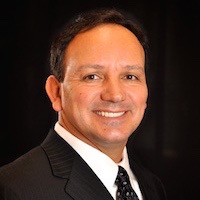Tag Archives: strategy
5 Ways for Executives to be Less Operational and More Strategic
As we ponder what 2020 will bring, an adage comes to mind: the only thing that’s certain is change.
You can plan and prepare all you want, but the best way to be agile in a shifting environment is to stay connected to the undercurrent of emerging events and patterns – and utilize ingenuity to find the best way to rise to the coming challenges and opportunities.
And, whether you realize it or not, we’ve all been conditioned to tune out or disregard this vital source of intelligence.
The reason is, these days the speed of change (and innovation) moves very quickly …
And it becomes far too easy to rely on plans and approaches that were designed in the past, using old ways of thinking.
In the end utilizing information that is no longer relevant comes with heavy opportunity costs.
Albert Einstein once said “The intuitive mind is a sacred gift, and the rational mind it’s faithful servant. We have created a society that honors the servant and has forgotten the gift.”
This seems especially true in corporate America, where systems, processes and standard operating procedures are often revered as a means to minimize risk, variation and chaos and exert control over our environment. People go to great lengths to plan and research best practices, set guidelines in place and create controls that ensure people follow them.
And when it’s time to execute – you put your head down and run from one thing to the next, juggling multiple priorities and putting out fires, only stopping to troubleshoot when things don’t go to plan… There never seems to be enough time to pause long enough to determine whether the path you’re running on or the tactics you’re engaging in will get you to where you want to go.
After many conversations with colleagues and clients, it’s a clear consensus that real leaders are ready for a revolution of sorts. It’s time to capitalize on the opportunity to create positive change at all levels of an organization, from top down, to bottom up, because…
If the route you’re taking isn’t aligned with your desired destination, moving faster won’t do you any favors. And relying on your plan to tell you where to go next won’t either.
When you put more importance on the tactics than you do on the strategy and cling to a plan without continually reevaluating it, you have sacrificed the strategic in the name of the operational.
As an executive coach, this is one of the major challenges I work with executives to overcome. Operational is clean. It has defined edges and finite solutions. You can check the boxes and feel a sense of closure and control with an operational approach.
Strategic on the other hand can be a bit messier. It involves stepping into uncertainty to address challenges and opportunities that are new and unfamiliar. There is usually no one right answer. It often involves taking steps out of your comfort zone. And it requires that you slow down instead of speeding up, something that most of us tend to resist because slowing down flies in the face of what we’ve been conditioned to do.
To avoid this discomfort, many executives prefer being busy to being strategic. It gives them the illusion of being productive and the burst of adrenaline that is a nice (yet ultimately unsatisfying and addictive) placebo for real progress.
But busyness isn’t going to help you hit the target necessary to advance your business. Because until you slow down long enough to assess your environment and allow your intuitive mind to partner with your rational mind, you may not even realize what your true target is, let alone how to get there.
Malcolm Gladwell echoed the wisdom of Albert Einstein his iconic book Blink: The Power of Thinking Without Thinking. He wrote, “The key to good decision making is not knowledge. It is understanding. We are swimming in the former. We are desperately lacking in the latter.”
Knowledge is the product of absorbing information. Understanding is the product of insight. And insight comes from the integration of information with experience, from slowing down long enough to practice reflection and discernment.
And that’s an important key to successfully navigating the changing landscape of “business as usual”.
We live in an age of information. You can find an abundance of resources – articles, books, dissertations, webinars, workshops, best practices, etc. on any given topic. This information tends to be descriptive of what worked in the past to address the challenges faced by people and organizations whose situations are rarely identical to our emerging challenges and opportunities.
Acting on information without discernment is like taking someone else’s prescription given for a diagnosis that you aren’t entirely certain matches your own.
And yet all too often we move full speed ahead with seeming solutions that don’t really address the true underlying problems (and often make the problem worse). Ask yourself how many times have you’ve overlooked, disregarded or suppressed inklings or rumblings that told you something is just not right.
It happens to the best of us, because we get so attached to our plans that we resist (consciously or unconsciously) anything that could potentially interfere or slow us down.
Sometimes the inklings come from within, accompanied by a sense of incongruence. It might feel as if you are wearing someone else’s clothes while trying to convince yourself that they fit just fine, even though they are way too tight. But in the name of efficiency (and because you think slowing down to address it is a luxury you can’t afford), you press on anyway.
Other times the rumbles come from others within the organization, people who aren’t so attached to the predetermined plan, who are a little closer to the real problems and issues and have a sense of what needs to be done to address them. And they are all too often shushed by others (usually a few levels above in the hierarchy) who measure performance based on how well predetermined plans are implemented and adhered to.
So how do you turn this short-sighted, self-defeating old way of thinking dynamic around?
Here are five practical tips to get you moving in a new, more progressive and productive direction:
- Carve out time regularly for yourself to reflect, integrate and think strategically. Block this time on your calendar and hold it sacred in the same way you would a meeting with your boss or your most important customer. It doesn’t have to be a large block of time. The important thing is to slow down long enough to consider how things are going and to determine whether your approach is aligned with your desired goal. Identify what, if any, tweaks to your plan are necessary, and write down your ideas.
- Put just as much weight on the questions as you do the answers. Ask, “What are the problems I am/we are trying to solve? Could they be symptoms of a larger issue that has not yet been addressed? What are we seeing? What are we not seeing? How can we get the information and knowledge necessary to truly understand the problem and what needs to be done to effectively address it?”
- Encourage dialogue. This is a big one. Give people who are closest to the challenges and issues that are being addressed an opportunity to communicate with those who have the bigger, more strategic picture. Take steps to integrate top down and bottom up approaches by creating a forum for discussing emerging patterns, trends, problems and opportunities and dialoguing about what the best approaches and solutions may be.
- Welcome and embrace dissent. This may not be comfortable at first, but the more you can encourage people who have concerns with the current course of action to speak up, and give them opportunities to constructively express those concerns, the more likely you’ll gain the support and momentum you need to move forward. When you value people’s perspectives and contributions by listening with an open mind and a willingness to act, you’ll also have access to information that will dramatically increase your chances of success.
- Use discernment. When looking to best practices or considering recommendations from experts, determine whether they are truly a good fit (and to what degree they should be tweaked or tailored to meet the specific needs of the organization) before they are implemented.
The tendency to act operationally instead of strategically and overlook, disregard or suppress the very insight that will lead you to the best solutions and innovations, is only one of many common practices that are being challenged and improved on within the emerging real leader revolution. The focus of these new conversations and perspectives is helping both executives and the organizations they are a part of to unleash unprecedented performance, make a bigger impact and enjoy a greater sense of meaning and fulfillment in their work and their lives.
This translates into increased profitability, greater market share and stronger relationships with customers who become their biggest advocates.
If you are interested in learning more about how to liberate yourself and your organization from unproductive, self-defeating and potentially damaging ways of doing business as usual, visit www.RealLeaderRevolution.com and download your free copy of The Real Leader Revolution Manifesto.

